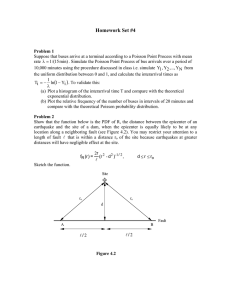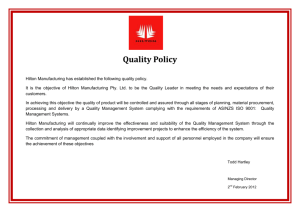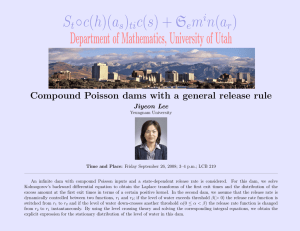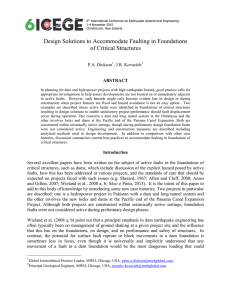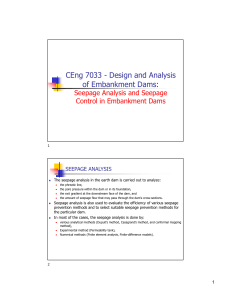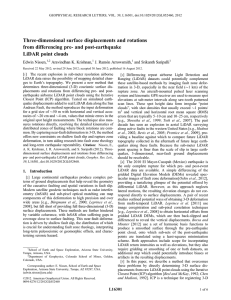Bio & Abstracts for 2011 Talks for AEG: Bruce Hilton’s Biography Mr. Hilton began his career at Leighton & Associates in Southern CA in 1978 and continued his career in Northern CA with KLEINFELDER since 1993. His
advertisement
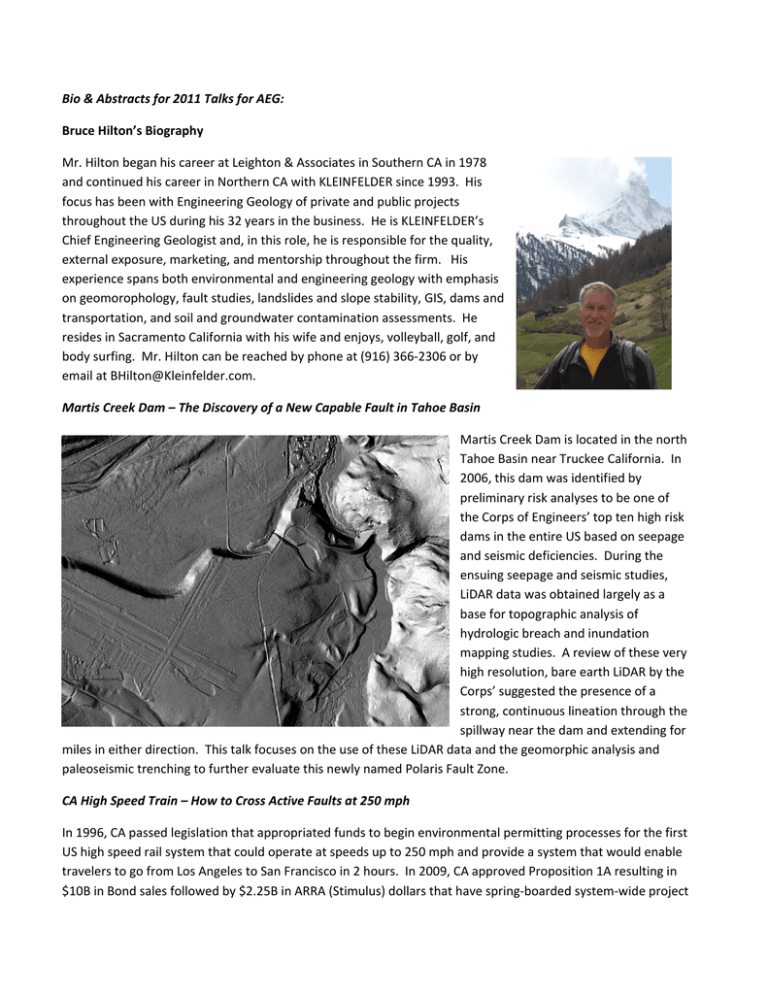
Bio & Abstracts for 2011 Talks for AEG: Bruce Hilton’s Biography Mr. Hilton began his career at Leighton & Associates in Southern CA in 1978 and continued his career in Northern CA with KLEINFELDER since 1993. His focus has been with Engineering Geology of private and public projects throughout the US during his 32 years in the business. He is KLEINFELDER’s Chief Engineering Geologist and, in this role, he is responsible for the quality, external exposure, marketing, and mentorship throughout the firm. His experience spans both environmental and engineering geology with emphasis on geomorophology, fault studies, landslides and slope stability, GIS, dams and transportation, and soil and groundwater contamination assessments. He resides in Sacramento California with his wife and enjoys, volleyball, golf, and body surfing. Mr. Hilton can be reached by phone at (916) 366‐2306 or by email at BHilton@Kleinfelder.com. Martis Creek Dam – The Discovery of a New Capable Fault in Tahoe Basin Martis Creek Dam is located in the north Tahoe Basin near Truckee California. In 2006, this dam was identified by preliminary risk analyses to be one of the Corps of Engineers’ top ten high risk dams in the entire US based on seepage and seismic deficiencies. During the ensuing seepage and seismic studies, LiDAR data was obtained largely as a base for topographic analysis of hydrologic breach and inundation mapping studies. A review of these very high resolution, bare earth LiDAR by the Corps’ suggested the presence of a strong, continuous lineation through the spillway near the dam and extending for miles in either direction. This talk focuses on the use of these LiDAR data and the geomorphic analysis and paleoseismic trenching to further evaluate this newly named Polaris Fault Zone. CA High Speed Train – How to Cross Active Faults at 250 mph In 1996, CA passed legislation that appropriated funds to begin environmental permitting processes for the first US high speed rail system that could operate at speeds up to 250 mph and provide a system that would enable travelers to go from Los Angeles to San Francisco in 2 hours. In 2009, CA approved Proposition 1A resulting in $10B in Bond sales followed by $2.25B in ARRA (Stimulus) dollars that have spring‐boarded system‐wide project design that is now well underway. Geotechnical and engineering geologic hazards across nearly 800 miles of high speed corridor are daunting challenges. Among these, 42 active faults are crossed by the project that require analysis and mitigation to ensure passenger safety and relatively uninterrupted revenue service. This talk focuses on the history and project components of High Speed Train systems, the overall technical challenges, and in particular the risk‐based methods of analysis and mitigation alternatives developed at fault crossings.

